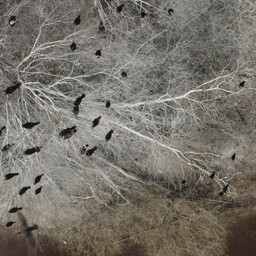Merikotkas on suur lind
, kes
jahib mitut liiki kalu ja linde
, sh kormorane. Uuring näitab, et mõlema liigi
toitumisalad Läänemerel kattuvad
. See tähendab, et nad
võitlevad samade kalu pärast
. Kuid
merikotkas on kormorani jaoks ohtlik
, sest ta ründab ka kormorane.
Merikotkas on suur lind
Tõlge fraasile: Merikotkas on suur lind
EN
The white-tailed eagle is a large bird
jahib mitut liiki kalu ja linde
Tõlge fraasile: jahib mitut liiki kalu ja linde
EN
hunts various species of fish and birds
toitumisalad Läänemerel kattuvad
Tõlge fraasile: toitumisalad Läänemerel kattuvad
EN
feeding areas overlap in the Baltic Sea
võitlevad samade kalu pärast
Tõlge fraasile: võitlevad samade kalu pärast
EN
compete for the same fish
merikotkas on kormorani jaoks ohtlik
Tõlge fraasile: merikotkas on kormorani jaoks ohtlik
EN
the white-tailed eagle is dangerous for the cormorant
Kormoranid püüavad kalda lähedal kalu. Merikotkas aga jahib nii kalu kui ka teisi linde. See
sunnib kormorane otsima uusi pesitsuskohti
. Näiteks Norra rannikul elavad suulad ja kaljukajakad on kolinud kohtadesse, kus merikotkad neid vähem häirivad.
sunnib kormorane otsima uusi pesitsuskohti
Tõlge fraasile: sunnib kormorane otsima uusi pesitsuskohti
EN
forces cormorants to seek new nesting sites
20. sajandi alguses oli merikotkas peaaegu kadunud
Läänemerest. Tänu looduskaitsele on nende arvukus taas kasvanud. 2012. aastal oli Läänemere ümbruses juba 3000 paari merikotkaid. Nende arvu kasv on looduskaitse edu.
20. sajandi alguses oli merikotkas peaaegu kadunud
Tõlge fraasile: 20. sajandi alguses oli merikotkas peaaegu kadunud
EN
at the beginning of the 20th century, the white-tailed eagle was almost extinct
Merikotkad
rüüstavad kormoranikolooniaid
. Näiteks Rootsis ründavad merikotkad umbes pooli kormoranikolooniatest. Kormoranid sunnitakse kolima või isegi oma kolooniaid hülgama. Kuid mõnes kohas saavad merikotkad ja kormoranid rahus koos elada.
rüüstavad kormoranikolooniaid
Tõlge fraasile: rüüstavad kormoranikolooniaid
EN
raid cormorant colonies
Merikotkad ründavad kormorani poegi ja pesi, eriti maapinnal olevaid. Puudel olevaid pesi rüüstatakse harvemini. Teada on ka juhtumeid, kus merikotkad käivad kolooniates puhkamas, ilma kormorane häirimata.
Uuring näitab, et
merikotka arvu kasvades
muutub kormoran neile olulisemaks toiduks. Kui merikotkaid on palju, võib see
piirada kormoranide pesitsusvõimalusi
. Merikotkad mõjutavad ka teiste lindude, nagu kajakate ja vareste, elu.
merikotka arvu kasvades
Tõlge fraasile: merikotka arvu kasvades
EN
with the increase in the number of white-tailed eagles
piirada kormoranide pesitsusvõimalusi
Tõlge fraasile: piirada kormoranide pesitsusvõimalusi
EN
limit the nesting opportunities of cormorants
The white-tailed sea eagle is a large bird that hunts several species of fish and birds, including cormorants. The study shows that the feeding areas of both species overlap in the Baltic Sea. This means they compete for the same fish. However, the white-tailed sea eagle is dangerous to the cormorant because it also preys on cormorants.
Cormorants catch fish near the shore. The white-tailed sea eagle, however, hunts both fish and other birds. This forces cormorants to seek new nesting sites. For example, the guillemots and kittiwakes living on the Norwegian coast have moved to places where white-tailed sea eagles disturb them less.
At the beginning of the 20th century, the white-tailed sea eagle was almost extinct in the Baltic Sea. Thanks to conservation efforts, their population has grown again. By 2012, there were already 3,000 pairs of white-tailed sea eagles around the Baltic Sea. The growth of their population is a conservation success.
White-tailed sea eagles raid cormorant colonies. For example, in Sweden, white-tailed sea eagles attack about half of the cormorant colonies. Cormorants are forced to move or even abandon their colonies. However, in some places, white-tailed sea eagles and cormorants can live together peacefully.
White-tailed sea eagles attack cormorant chicks and nests, especially those on the ground. Nests located in trees are raided less frequently. There are also known cases where white-tailed sea eagles visit colonies to rest without disturbing the cormorants.
The study shows that as the number of white-tailed sea eagles increases, the cormorant becomes a more important food source for them. If there are many white-tailed sea eagles, it may limit the nesting opportunities for cormorants. White-tailed sea eagles also affect the lives of other birds, such as gulls and crows.

